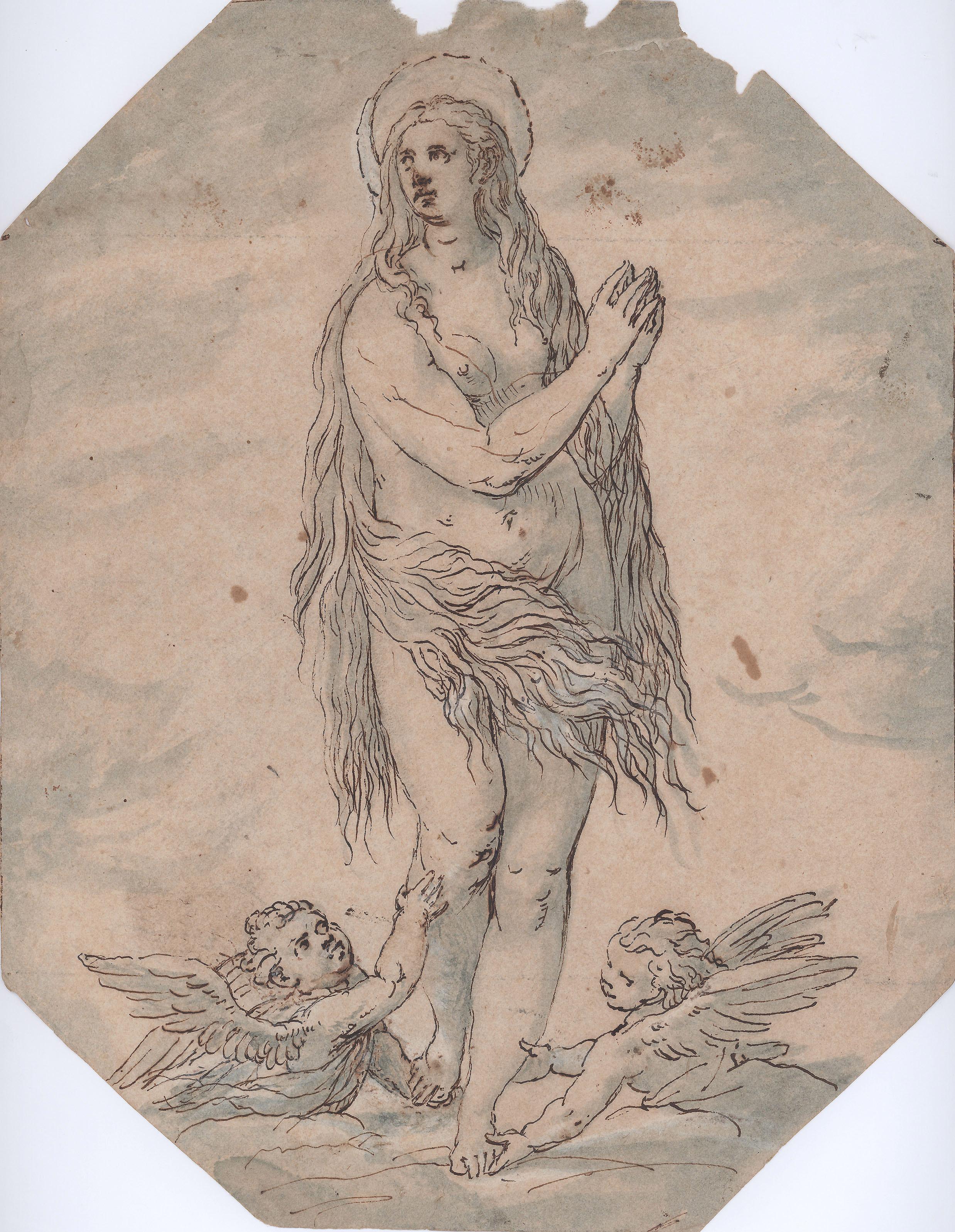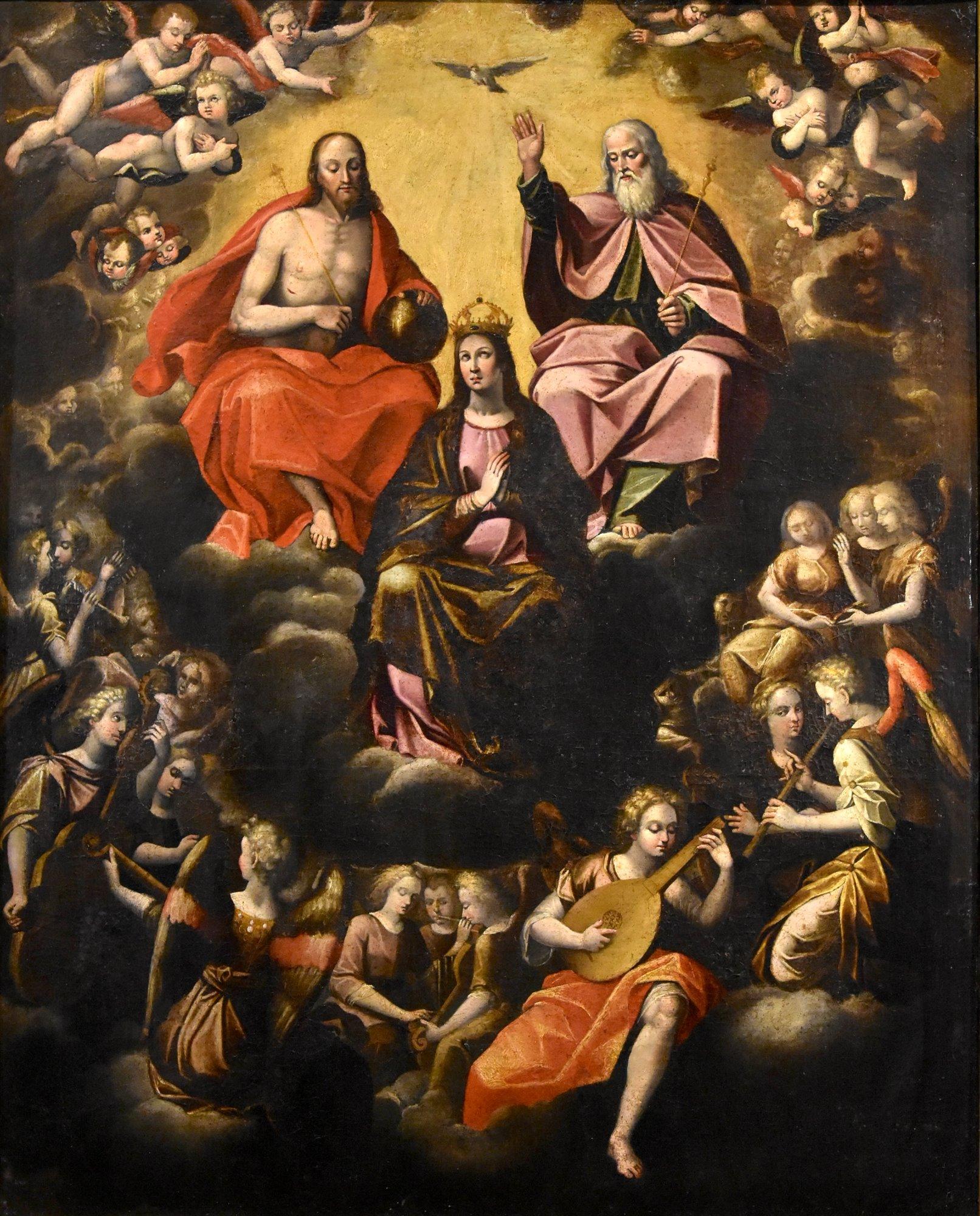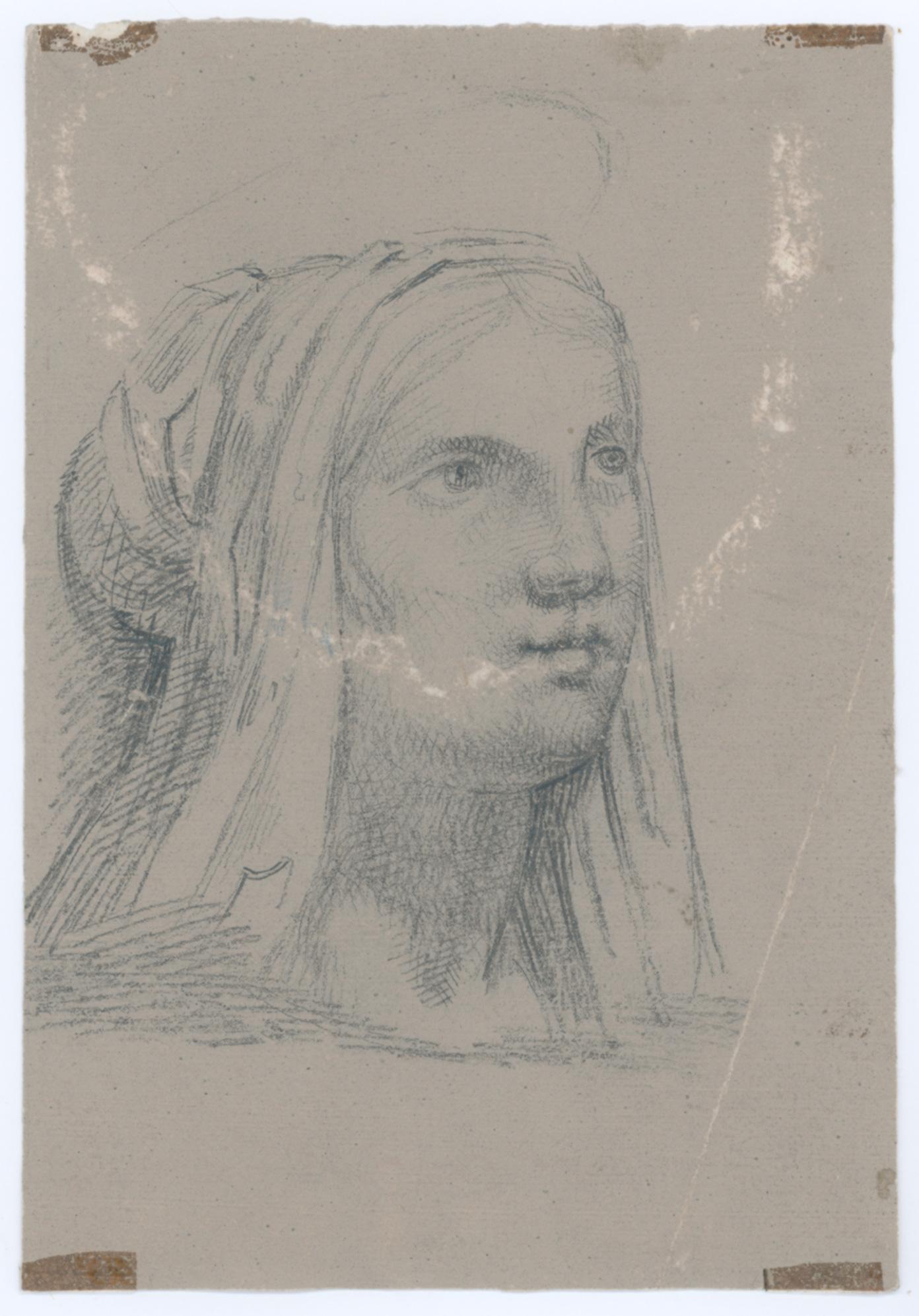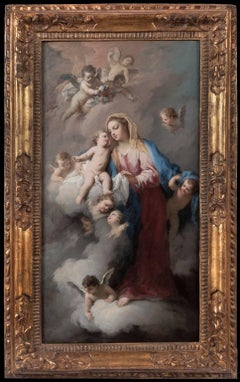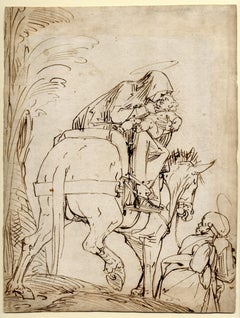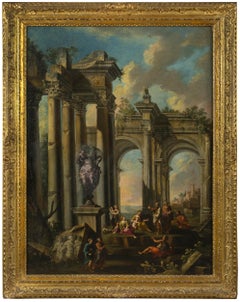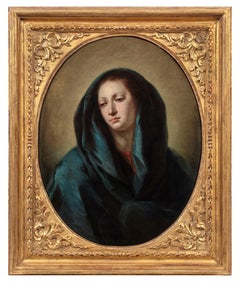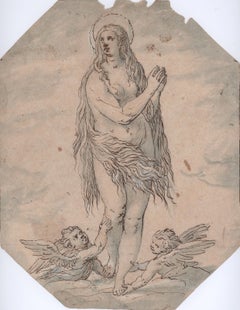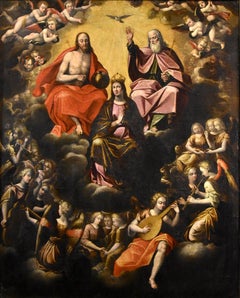Items Similar to The Assumption of the Virgin
Want more images or videos?
Request additional images or videos from the seller
1 of 2
Giovanni Battista PaggiThe Assumption of the Virgin
$8,500
£6,409.84
€7,413.29
CA$11,925.45
A$13,255.88
CHF 6,948.45
MX$161,886.41
NOK 86,747.39
SEK 81,613.11
DKK 55,330.66
About the Item
Provenance:
Unidentified collector’s mark “D.G.R,” lower right (Lugt 757b)
Wilhelm Suida (1877–1959), New York; by descent to:
Robert L. and Bertina Suida Manning, New York, until 1996
Private Collection, USA
This impressive drawing of the Assumption of the Virgin is the work of the Genoese artist Giovanni Battista Paggi. The son of a nobleman, Paggi received a humanist education and was a self-taught artist. According to Paggi’s first biographer, Raffaele Soprani, it was only after encountering Luca Cambiaso and being praised by him that Paggi decided to pursue a career as a painter, against the wishes of his father. Paggi was banished from Genoa in 1581 after murdering a patron who had refused to pay for one of his works. He took refuge in Florence under the protection of Francesco I de’ Medici, Grand Duke of Tuscany, remaining there until 1599. In Florence, he worked out of a studio in a house owned by Federico Zuccaro and was a member of the Accademia Fiorentina del Disegno beginning in 1586. He undertook numerous commissions in Tuscany during this period, supplying altarpieces for churches in San Gimignano, Pistoia, Lucca, and other minor cities.
This Assumption of the Virgin is a characteristic work by Paggi, whose complex compositional arrangements were frequently divided across several levels. Here, the Virgin is framed by the cloud supported by putti that encircles her. Below, the apostles are arranged in a circle around her open tomb, gazing upward with expressions of amazement as she ascends towards heaven. The significance of this moment is expressed through the emphatic gestures of the figures, including the outstretched arm and upturned palm of the Virgin, the hands clasped in prayer of the angel to her right, and the various gesticulations of the apostles.
One of the most striking details of the drawing is the arrangement of the apostles in the foreground, who, facing away from the viewer, obscure a complete view of the tomb and draw our attention to the Virgin. Paggi has masterfully captured the confusion and wonder of the apostles through the angular lines of the drapery, rendered with quick, nervous strokes of the pen. The liberal application of the wash in the lower half of the composition and its restrained use above is particularly skillful, allowing the white of the paper to highlight the upper portion of the drawing and express the radiance of the light concentrated on the Virgin.
The drawing dates from the latter part of Paggi’s stay in Florence, when he was most frequently engaged as a painter of church decorations. Paggi completed two altarpieces depicting the Assumption of the Virgin during his Florentine period—one for the chapel to the left of the high altar in the cathedral of Pistoia (1593–1594) and another for the church of Nostra Signora del Carmine in Genova (1596), which he presumably painted in Florence and shipped back to his native city.1 Although the present drawing does not correspond exactly to the final composition of either of these paintings, the stylistic relation is apparent especially with the version in Pistoia, for which it might be a preliminary design.
- Creator:Giovanni Battista Paggi (1554 - 1627)
- Dimensions:Height: 13.375 in (33.98 cm)Width: 9.125 in (23.18 cm)
- Medium:
- Movement & Style:
- Period:
- Condition:
- Gallery Location:New York, NY
- Reference Number:1stDibs: LU1029077832
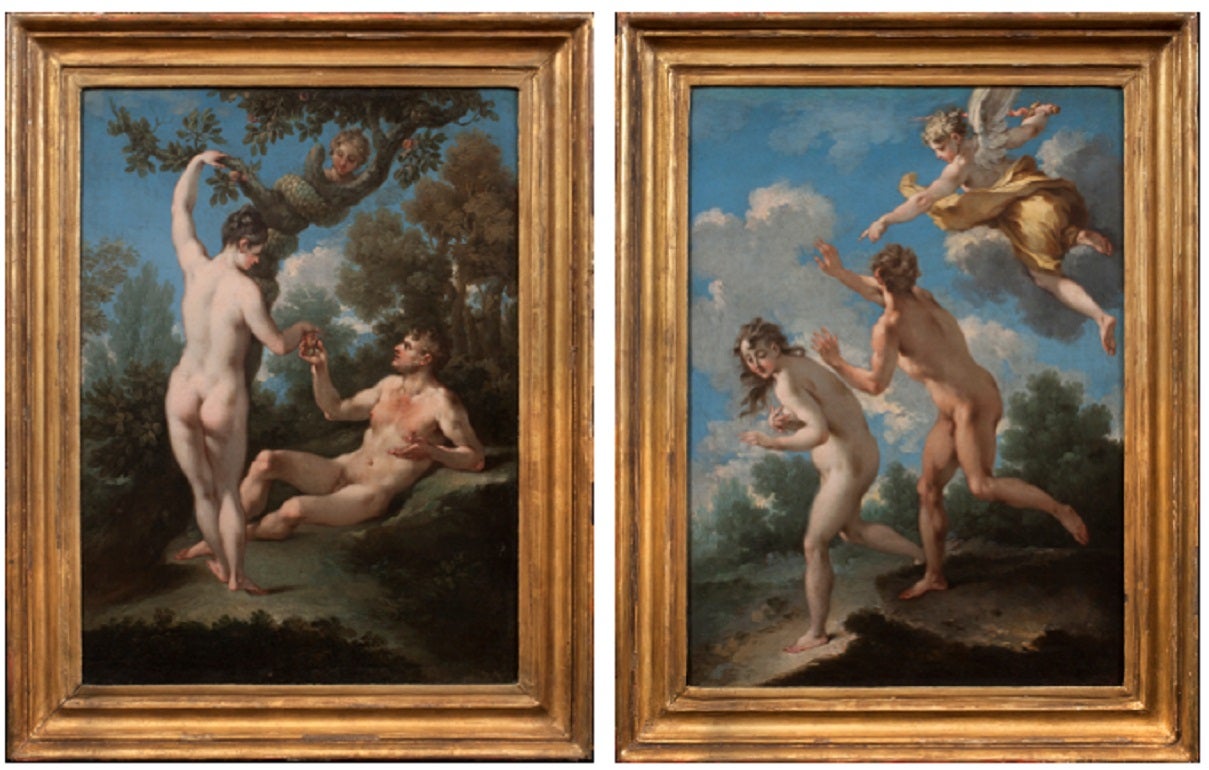
About the Seller
5.0
Recognized Seller
These prestigious sellers are industry leaders and represent the highest echelon for item quality and design.
Established in 1997
1stDibs seller since 2012
22 sales on 1stDibs
Typical response time: 8 hours
- ShippingRetrieving quote...Shipping from: New York, NY
- Return Policy
Authenticity Guarantee
In the unlikely event there’s an issue with an item’s authenticity, contact us within 1 year for a full refund. DetailsMoney-Back Guarantee
If your item is not as described, is damaged in transit, or does not arrive, contact us within 7 days for a full refund. Details24-Hour Cancellation
You have a 24-hour grace period in which to reconsider your purchase, with no questions asked.Vetted Professional Sellers
Our world-class sellers must adhere to strict standards for service and quality, maintaining the integrity of our listings.Price-Match Guarantee
If you find that a seller listed the same item for a lower price elsewhere, we’ll match it.Trusted Global Delivery
Our best-in-class carrier network provides specialized shipping options worldwide, including custom delivery.More From This Seller
View AllMadonna and Child with Angels in the Clouds
Located in New York, NY
Provenance: Charles H. and Virginia Baldwin, Claremont, Colorado Springs, Colorado ca. 1907-1934; thence by descent until sold in 1949 to:
Charles Blevins Davis, Claremont (renamed Trianon), Colorado Springs 1949 -until gifted in 1952 to:
The Poor Sisters of Saint Francis, Trianon, Colorado Springs, 1952 until acquired, 1960, by:
John W. Metzger, Trianon, renamed as the Trianon School of Fine Arts, Colorado Springs, 1960-1967; when transferred to:
The Metzger Family Foundation, Trianon Art Museum, Denver, 1967 - 2004; thence by descent in the Metzger Family until 2015
Exhibited: Trianon Art Museum, Denver (until 2004)
The present work is a spectacular jewel-like canvas by Amigoni, rich in delicate pastel colors, most likely a modello for an altarpiece either lost or never painted. In it the Madonna stands firmly upon a cloud in the heavens, her Child resting on a delicate veil further supported by a cloud, as he gently wraps his arm around his mother’s neck. From above angels prepare to lower flowers and a wreath, while other angels and seraphim surrounding the two joyfully cavort.
Dr. Annalisa Scarpa, author of the forthcoming monograph on Jacopo Amigoni...
Category
18th Century and Earlier Figurative Paintings
Materials
Canvas, Oil
The Flight into Egypt
Located in New York, NY
Inscribed: 3. una Madonna che va in Egitto, verso, and Madonna che va in Egitto, recto
Provenance:
Private Collection, UK, since 1999
This expressive and boldly executed drawing is the work of Luca...
Category
16th Century Old Masters Figurative Drawings and Watercolors
Materials
Chalk, Ink, Pen, Paper
An Architectural Capriccio with the Preaching of an Apostle
By Giovanni Paolo Panini
Located in New York, NY
Provenance: Santambrogio Antichità, Milan; sold, 2007 to:
Filippo Pernisa, Milan; by whom sold, 2010, to:
Private Collection, Melide, Switzerland
De Primi Fine Art, Lugano, Switzerland; from whom acquired, 2011 by:
Private Collection, Connecticut (2011-present)
Literature: Ferdinando Arisi, “Ancora sui dipinti giovanili del Panini,” Strenna Piacentina (Piacenza, 2009): pp. 48, 57, 65, fig. 31, as by Panini
Ferdinando Arisi, “Panini o Ghisolfi o Carlieri? A proposito dei dipinti giovanili,” Strenna Piacentina, (Piacenza, 2010), pp. 100, 105, 116, fig. 101, as an early work by Panini, a variant of Panini’s painting in the Museo Cristiano, Esztergom, Hungary.
This architectural capriccio is one of the earliest paintings by Giovanni Paolo Panini, the preeminent painter of vedute and capricci in 18th-century Rome. The attribution to Panini has been endorsed by Ferdinando Arisi, and a recent cleaning of the painting revealed the artist’s signature in the lower right. Like many of his fellow painters working in Rome during his day, Panini was not a native of the Eternal City. He first trained as a painter and stage designer in his hometown of Piacenza and moved to Rome at the age of 20 in November 1711 to study figure painting. Panini joined the workshop of Benedetto Luti (1666-1724) and from 1712 was living on the Piazza Farnese. Panini, like many before and after him, was spellbound by Rome and its classical past. He remained in the city for the rest of his career, specializing in depicting Rome’s most important monuments, as well as creating picturesque scenes like this one that evoked the city’s ancient splendor.
The 18th century art historian Lione Pascoli, who likely knew Panini personally, records in his 1730 biography of the artist that when Panini came to Rome, he was already “an excellent master and a distinguished painter of perspective, landscape, and architecture.” Panini’s earliest works from this period still show the evidence of his artistic formation in Piacenza, especially the influence of the view painter Giovanni Ghisolfi (1623-1683). However, they were also clearly shaped by his contact in Rome with the architectural capricci of Alberto Carlieri...
Category
18th Century Old Masters Figurative Paintings
Materials
Canvas, Oil
Head of the Virgin
Located in New York, NY
Provenance: Private Collection, Paraguay.
This unpublished Head of the Virgin is a new addition to the rich corpus of paintings by Giovanni Battista Tiepolo. While the artist freque...
Category
18th Century Old Masters Figurative Paintings
Materials
Oil, Canvas
Baptism of Christ
Located in New York, NY
Provenance:
Achillito Chiesa, Milan
Luigi Albrighi, Florence, by 1 July 1955
with Marcello and Carlo Sestieri, Rome, 1969
Private Collection, Connecticut
Exhibited:
Mount Holyoke College Art Museum, South Hadley, Massachusetts (on loan, 2012)
Literature:
Carlo Volpe, “Alcune restituzioni al Maestro dei Santi Quirico e Giulitta,” in Quaderni di Emblema 2: Miscellanea di Bonsanti, Fahy, Francisci, Gardner, Mortari, Sestieri, Volpe, Zeri, Bergamo, 1973, pp. 19-20, fig. 18, as by the Master of Saints Quiricus and Julitta (now identified as Borghese di Piero).
This fine predella panel depicting the Baptism...
Category
15th Century and Earlier Old Masters Figurative Paintings
Materials
Tempera, Wood Panel
A Guardian Angel and a Child
Located in New York, NY
Provenance:
Cornelius Vanderbilt, New York; by whom gifted in 1880 to:
The Metropolitan Museum of Art, New York (80.3.673); deaccessioned and sold:
Christie’s, New York, 12 June 19...
Category
17th Century Old Masters Portrait Paintings
Materials
Terracotta, Gesso
You May Also Like
The Assumption of Mary Magdalene, Italian School, 16th Century
Located in Middletown, NY
Brownish ink and grayish ink wash with white heightening on handmade cream laid paper, 10 5/8 x 8 1/4 inches (267 x 208 mm)(matrix). Scattered minor losses to top sheet edge (outside...
Category
16th Century Old Masters Figurative Drawings and Watercolors
Materials
Ink, Handmade Paper, Laid Paper
Assumption Virgin Trinity Caccia Paint 17th Century Oil on canvas Old master Art
Located in Riva del Garda, IT
Guglielmo Caccia (Monabone, 1568 - Moncalvo, 1625) and workshop
Assumption of the Virgin with the Trinity and concert of angels
Oil on canvas (125 x 100 cm - In frame 137 x 112 c...
Category
17th Century Old Masters Paintings
Materials
Oil
$11,785 Sale Price
20% Off
17th Century By Domenico Maria Canuti Assumption of the Virgin Oil on Canvas
Located in Milano, Lombardia
Domenico Maria Canuti (Bologna, Italy, 1626 – 1684)
Title: Assumption of the Virgin
Medium: Oil on canvas
Dimensions: 138 x 104.5 cm without frame
Expertise by Professor Micaela Li...
Category
17th Century Old Masters Figurative Paintings
Materials
Canvas, Oil
Death of the Virgin (Old Master drawing)
Located in Wilton Manors, FL
Old Master drawing, Death of the Virgin Surrounded by Apostles, ca. 17th century.
Ink pen and wash on paper. Sheet measuring 11 x 15.5 inches. Framed measurement: 18.5 x 23.5 inches...
Category
17th Century Old Masters Figurative Drawings and Watercolors
Materials
Ink
Italian School, Nicolo Grassi, 18th, Worship of Venus, The Venus Sacrifice, Amor
Located in Greven, DE
Italian School, 18th Century, Circle of Grassi,
This old master drawing is drawn in the late-Baroque or Rococo style.
It depicts a woman worshipping Venus/ preparing a sacrifice for ...
Category
Late 17th Century Baroque Figurative Drawings and Watercolors
Materials
Handmade Paper
$1,646 Sale Price
40% Off
Study for Assumption of the Virgin
Located in Middletown, NY
Graphite on hand made, fibrous wove paper, finished with gray wash. Unevenly trimmed sheet edges, non-archival tape remnants at all four corners, recto, well outside of image area. Horseshoe-shaped area of light discoloration that extends significantly into the figure's face, beneath the lips, and up over the rear of the head, dog-eared right lower corner with associated light discoloration at crease. DeMin and Belluno inscribed in graphite, verso.
A detailed study showing 'primo pensiero' for Giovanni DeMin's large scale fresco, Assumption of the Virgin...
Category
Mid-19th Century Old Masters Portrait Drawings and Watercolors
Materials
Handmade Paper, Graphite
More Ways To Browse
Apostles Painting
Old Master Drawing 16th
Prayer Altar
Assumption Of The Virgin
San Gimignano
Luca Cambiaso
Germany Landscape Painting
Sculpture Abstract Nature
Pink Oil Painting
California Vintage Painting
Paintings Of Rome Italy
Color Field Abstract
Still Life Painting With Flowers
Painting 1966
Picasso Lithographs
Small Framed Landscapes
20th Century Italian Paintings
Female Form
